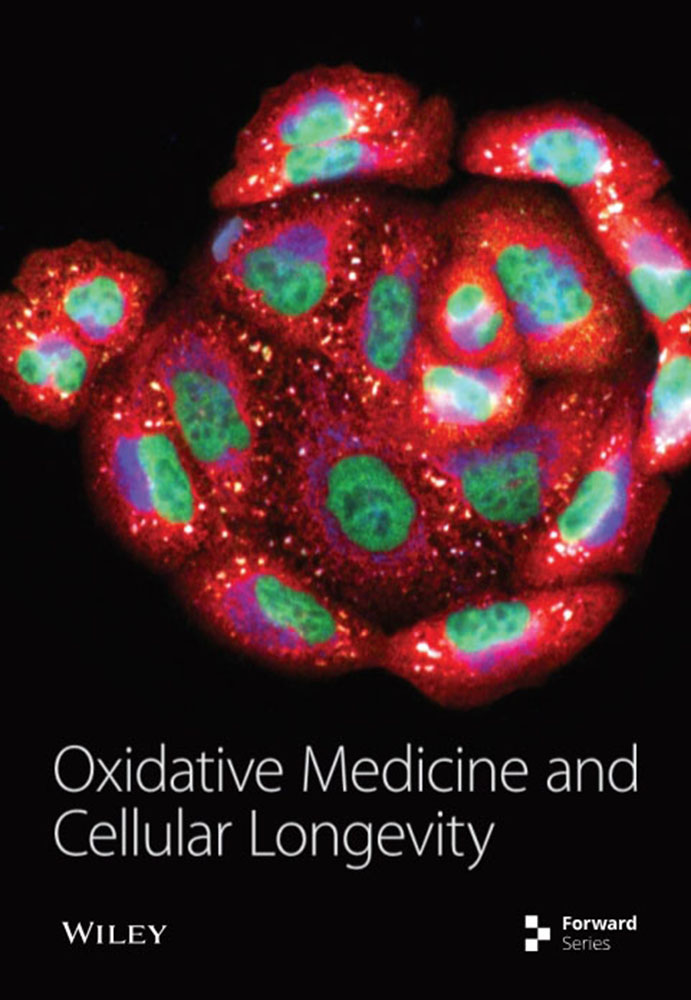阿巴他赛普大鼠模型中心肌梗死诱发炎症的有望再利用解决方案
2区 生物学
Q1 Biochemistry, Genetics and Molecular Biology
引用次数: 0
摘要
心肌梗死(MI)是由于长时间缺血/缺氧对心肌组织造成的不可逆损伤,随后导致收缩功能丧失和心肌损伤。然而,在危险期过后,缺血再灌注(IR)本身会导致氧自由基的产生、阳离子平衡的紊乱、细胞能量储存的耗竭以及先天性和适应性免疫反应的激活。本研究采用的阿巴他赛普(ABT)是一种抗炎药物,最初用作抗风湿反应剂。为了研究 ABT 的心脏保护潜力,首先在化学诱导的心肌坏死模型中优化了剂量。此后,在心肌红外损伤的手术模型中,将动物(n = 30)随机分为五组,以 5 mg/kg s.c. OD 的剂量对 ABT 的心脏保护潜力进行了研究:Sham 组、IR-C 组、Telmi10 + IR 组(替米沙坦,10 毫克/千克口服)、ABT5 + IR 组、ABT perse.ABT和替米沙坦给药21天。第21天,对动物进行LAD冠状动脉闭塞60分钟,然后再灌注45分钟。此外,还通过血液动力学参数、氧化-抗氧化生化酶学参数、心脏损伤、炎症标志物、组织病理学分析、TUNEL检测和免疫组织化学评估来评估心脏保护潜力,然后通过免疫印迹来探索信号通路。统计采用单因素方差分析,然后进行Tukey比较事后检验。值得注意的是,ABT 预处理 21 天可改善心肌梗死大鼠模型的血液动力学和心室功能。ABT的心脏保护潜力伴随着抑制MAP激酶信号转导和调节Nrf-2/HO-1蛋白下游信号级联。总之,本研究加强了之前已知的 ABT 在心肌梗死中的抗炎作用,并有助于从机理上深入了解和应用临床批准的药物来避免炎症反应的激活。本文章由计算机程序翻译,如有差异,请以英文原文为准。
Abatacept: A Promising Repurposed Solution for Myocardial Infarction-Induced Inflammation in Rat Models
Myocardial infarction (MI) is irreversible damage to the myocardial tissue caused by prolonged ischemia/hypoxia, subsequently leading to loss of contractile function and myocardial damage. However, after a perilous period, ischemia-reperfusion (IR) itself causes the generation of oxygen free radicals, disturbance in cation homeostasis, depletion of cellular energy stores, and activation of innate and adaptive immune responses. The present study employed Abatacept (ABT), which is an anti-inflammatory drug, originally used as an antirheumatic response agent. To investigate the cardioprotective potential of ABT, primarily, the dose was optimized in a chemically induced model of myocardial necrosis. Thereafter, ABT optimized the dose of 5 mg/kg s.c. OD was investigated for its cardioprotective potential in a surgical model of myocardial IR injury, where animals (n = 30) were randomized into five groups: Sham, IR-C, Telmi10 + IR (Telmisartan, 10 mg/kg oral OD), ABT5 + IR, ABT perse. ABT and telmisartan were administered for 21 days. On the 21st day, animals were subjected to LAD coronary artery occlusion for 60 min, followed by reperfusion for 45 min. Further, the cardioprotective potential was assessed through hemodynamic parameters, oxidant–antioxidant biochemical enzymatic parameters, cardiac injury, inflammatory markers, histopathological analysis, TUNEL assay, and immunohistochemical evaluation, followed by immunoblotting to explore signaling pathways. The statistics were performed by one-way analysis of variance, followed by the Tukey comparison post hoc tests. Noteworthy, 21 days of ABT pretreatment amended the hemodynamic and ventricular functions in the rat models of MI. The cardioprotective potential of ABT is accompanied by inhibiting MAP kinase signaling and modulating Nrf-2/HO-1 proteins downstream signaling cascade. Overall, the present work bolsters the previously known anti-inflammatory role of ABT in MI and contributes a mechanistic insight and application of clinically approved drugs in averting the activation of inflammatory response.
求助全文
通过发布文献求助,成功后即可免费获取论文全文。
去求助
来源期刊
CiteScore
13.20
自引率
0.00%
发文量
1274
审稿时长
3-8 weeks
期刊介绍:
Oxidative Medicine and Cellular Longevity is a unique peer-reviewed, Open Access journal that publishes original research and review articles dealing with the cellular and molecular mechanisms of oxidative stress in the nervous system and related organ systems in relation to aging, immune function, vascular biology, metabolism, cellular survival and cellular longevity. Oxidative stress impacts almost all acute and chronic progressive disorders and on a cellular basis is intimately linked to aging, cardiovascular disease, cancer, immune function, metabolism and neurodegeneration. The journal fills a significant void in today’s scientific literature and serves as an international forum for the scientific community worldwide to translate pioneering “bench to bedside” research into clinical strategies.

 求助内容:
求助内容: 应助结果提醒方式:
应助结果提醒方式:


